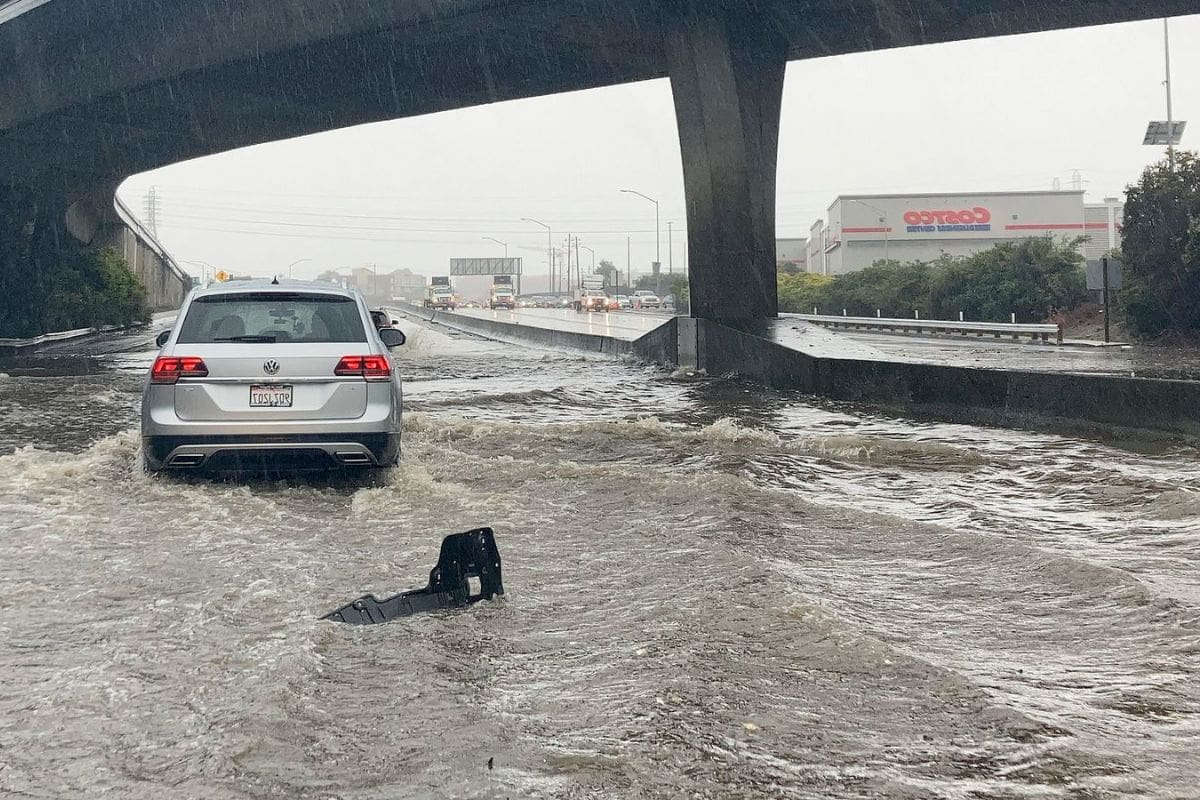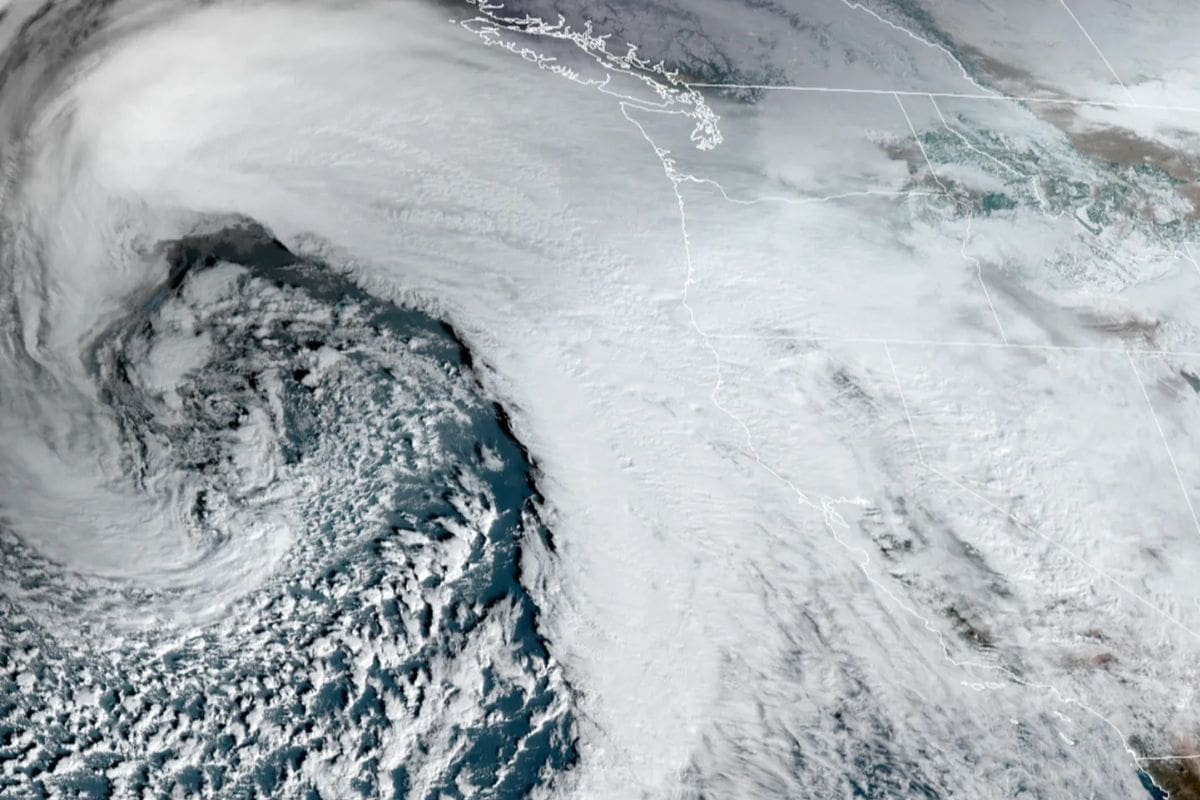California Atmospheric River Fuels Storms: The recent storm that swept through the San Francisco Bay Area serves as a stark reminder of the power and impact of California’s atmospheric rivers. These narrow bands of moisture-laden air can stretch for thousands of miles, delivering copious amounts of rainfall and fueling intense storms and floods.
While the immediate consequences are evident in the flooded streets and damaged infrastructure, the broader implications of atmospheric rivers extend far beyond the affected areas.
In this discussion, we will explore the role of atmospheric rivers in driving storms and floods, the immediate consequences faced by regions such as Southern and Eastern California, as well as the importance of understanding and preparedness in the face of these powerful weather events.
Key Takeaways
- Recent storms in California, fueled by atmospheric rivers, have had significant impacts on the San Francisco Bay Area and Southern and Eastern California.
- The storms have caused disruptions in transportation and infrastructure, localized flooding, impassable roads, and hazardous conditions for residents.
- The region has been ill-prepared for extreme weather conditions, highlighting the need for improved understanding and preparedness.
- Understanding atmospheric rivers is crucial for predicting and preparing for future extreme weather events in California.
Storm Hits San Francisco Bay Area
The San Francisco Bay Area was severely impacted by a powerful storm, resulting in the suspension of cable car services due to heavy rain and snowfall caused by back-to-back atmospheric rivers.
The storm, fueled by an atmospheric river, brought substantial precipitation to the region, causing disruptions in transportation and infrastructure. The heavy rain and snowfall led to localized flooding, making roads impassable and creating hazardous conditions for residents.
As a result, cable car services were suspended for safety reasons. The storm’s intensity and duration exceeded expectations, catching many residents off guard. The San Francisco Bay Area, known for its mild climate, was ill-prepared for such extreme weather conditions.
The suspension of cable car services serves as a reminder of the vulnerability of the region to severe storms and the importance of proactive measures to mitigate their impact.
Southern and Eastern Impact
Subsequently, the storm’s focus shifted to the southern and eastern parts of California, resulting in disruptions during the morning commute in Southern California.
The primary driver identified was atmospheric rivers, long bands of moisture originating over the Pacific. As the storm moved south and east, it brought heavy rain, strong winds, and flash flood warnings to these areas.
National Weather Service forecaster Bob Oravec said the cities of Los Angeles, San Diego, and Riverside experienced significant rainfall, leading to flooded streets, traffic delays, and dangerous driving conditions. In addition, strong winds caused downed trees and power outages in some areas.
Local authorities urged residents to stay off the roads and take necessary precautions.
The impacts of the storm in the southern and eastern regions of California highlight the widespread nature and severity of the atmospheric river event.
The Role of Atmospheric Rivers
READ MORE: California Faces Back-To-Back Atmospheric Rivers Set to Soak the State
What is the significance of atmospheric rivers in fueling storms and floods in California?
Atmospheric rivers play a crucial role in the formation of storms and floods in California. These long, narrow bands of moisture-rich air are formed ahead of cold fronts across the Pacific Ocean.
When these atmospheric rivers interact with the topography of the West Coast, particularly the coastal ranges and the Sierras, they result in heavy rainfall. These intense rain events can lead to widespread flooding and pose significant threats to infrastructure and communities.
Understanding the role of atmospheric rivers is essential for predicting and preparing for these extreme weather events in California. By monitoring and studying these atmospheric phenomena, forecasters can improve their ability to issue timely warnings and help mitigate the impacts of storms and floods.
Immediate Consequences and Broader Implications
The storms that swept through California had immediate consequences, impacting transportation services and causing concerns for residents. The adverse weather conditions began in the San Francisco Bay Area on Wednesday, affecting transportation services and making travel difficult. The situation worsened as the storms shifted to Southern California on Thursday, leading to further disruptions during the morning commute.
The heavy rainfall and strong winds also raised concerns among residents about potential flooding and damage to property. As a result of the storms, several roads and highways were closed, flights were delayed or canceled, and power outages were reported in various areas.
The immediate consequences of these storms highlight the vulnerability of California’s infrastructure and the need for effective disaster preparedness and response measures.
- Disrupted transportation services
- Difficulties in travel
- Concerns about flooding and property damage
- Road and highway closures
- Flight delays and cancellations
Understanding and Preparedness
As California continues to grapple with the immediate consequences of the recent storms, it is crucial to understand the nature of atmospheric rivers and their impact on the state’s environment and infrastructure, emphasizing the need for preparedness and awareness.
Atmospheric rivers are moisture-laden bands that play a significant role in influencing weather patterns. When these bands interact with the geographical features of the West Coast, they contribute to heavy precipitation, leading to storms and floods.
To mitigate the effects of these weather events, it is essential for individuals, communities, and government agencies to be prepared and informed. This includes implementing effective flood control measures, improving infrastructure resilience, and educating the public about the risks and safety measures associated with atmospheric rivers.
Conclusion Of California Atmospheric River Fuels Storms
The recent atmospheric river in California has resulted in severe storms and floods in the San Francisco Bay Area, as well as impacting the southern and eastern regions.
Atmospheric rivers play a crucial role in transporting large amounts of moisture from the tropics to higher latitudes, leading to intense precipitation events. The immediate consequences of these events include property damage, infrastructure disruptions, and loss of life.
It is essential for communities to understand and prepare for the potential impacts of atmospheric rivers to minimize their adverse effects.




